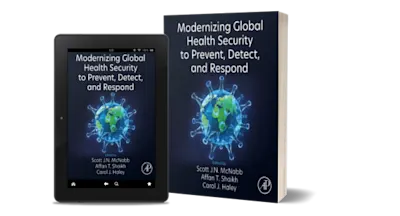LIMITED OFFER
Save 50% on book bundles
Immediately download your ebook while waiting for your print delivery. No promo code needed.

Safety in the process industries is critical for those who work with chemicals and hazardous substances or processes. The field of loss prevention is, and continues to be, of… Read more
LIMITED OFFER
Immediately download your ebook while waiting for your print delivery. No promo code needed.

A – Introduction and Hazard Identification
Chapter 1. Introduction
1.1 Historical prologue
1.2 Safety triad
1.3 Safety I, Safety II, and Risk Assessment
1.4 Risk Communication
Chapter 2. Overview assessment process
2.1 Assessment steps
2.2 Context project/scope
2.3 Security assessment
Chapter 3. Hazard Identification and characterization
3.1 Methods, socio-technical system approach
3.2 Scenario definition and representation
3.3 Accident data bases
3.4 Critical considerations
B – Consequence Analysis
Chapter 4. Consequence analysis
4.1 Source term, outflow, pool
4.2 Gas/vapor/aerosol dispersion
4.3 Explosion
4.4 Fire
4.5 Toxic release
4.6 Cryogens: LNG and Hydrogen
4.7 Damage types and probits
4.8 Natural hazard (NaTech) probits
C – Failure Rates and Probabilities
Chapter 5. Failure rates
5.1 Human factors & Organizational factors
5.2 Reliability, availability, maintainability
5.3 Data processing methods
5.4 Expert elicitation
5.5 (Quantitative) Fault tree, Safe tree, and Event tree
5.6 Inspection and maintenance
D – Risk Assessment and Management
Chapter 6. Risk determination
6.1 Risk presentation
6.2 Handling uncertainty
6.3 Deep uncertainty methods
Chapter 7 Dynamic/Operational Risk Assessment
7.1 Methods for different situations
7.2 Weak signals, Early warning
Chapter 8. Risk reducing measures
8.1 Safety management system
8.2 Measures, barriers
8.3 Layer of Protection Analysis (LOPA)
8.4 Standards, codes and best practice
Chapter 9 Risk Management and Resilience
Chapter 10. Risk Assessment reporting requirements
Chapter 11. Risk based decision making
11.1 Validation risk study
11.2 Human decision making
11.3 Decision support methods
11.4 Economic decision making
11.5 Public risk acceptance
Chapter 12. Epilogue
HP
Professor Pasman graduated in Chemical Technology at Delft University of Technology in 1961, and finished a Doctor’s thesis in 1964 while working for Shell. He joined the Dutch Organisation for Applied Research, TNO, in 1965, initiating and performing research in reactive materials, gas, dust and energetic material explosions, investigation of industrial accidents and risk analysis, while also managing organizational units.
He has been a member of the Working Party on Loss Prevention and Safety Promotion in the Process Industries since 1972, and chairman from 1986-2004. In this latter capacity he was instrumental in founding the European Process Safety Centre in 1992. He has also been chairman of the International Group on Unstable Substances (IGUS) for 10 years, of the European Study Group on Risk Analysis (1980-1985), and of a NATO Group on Explosives (1982-1992). At the Delft University of Technology he led a multinational project on gas explosion fundamentals at elevated pressures and temperatures (2003-2008). In 2007 he co-organized a NATO advanced research workshop on Resilience of Cities to Terrorists and other Threats. From 2004-2012 he was a Member of the Dutch national Advisory Council on Hazardous Substances.
FK